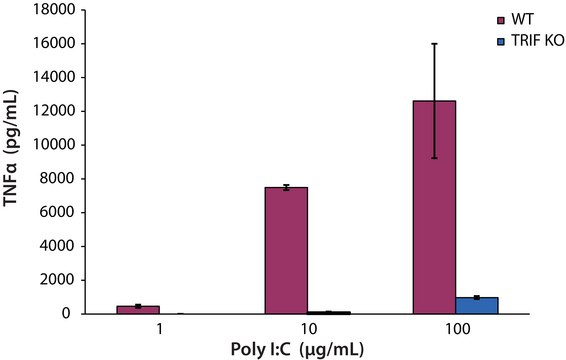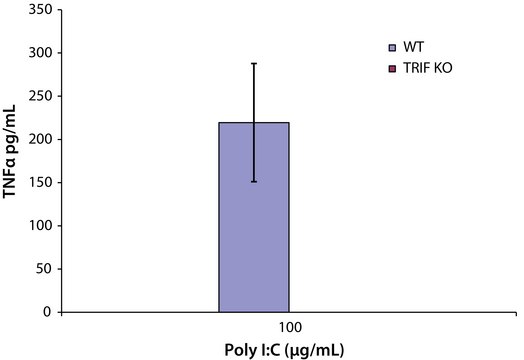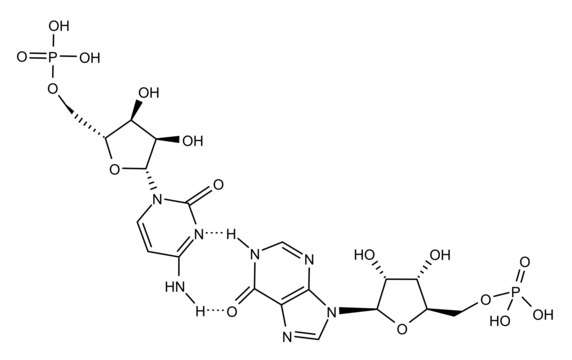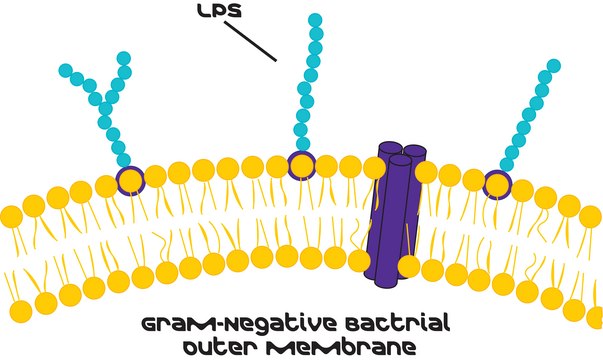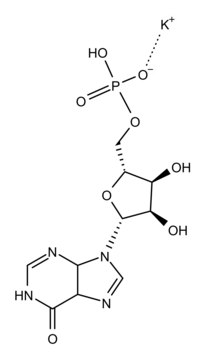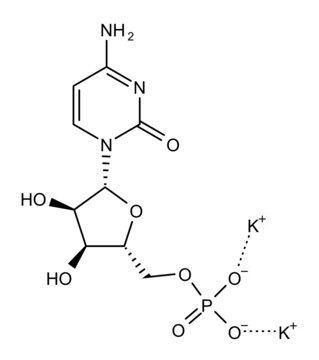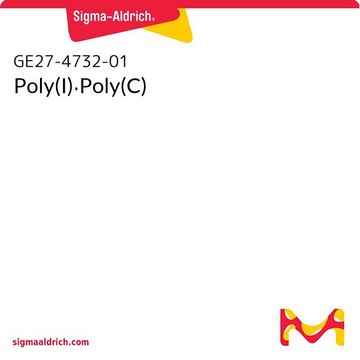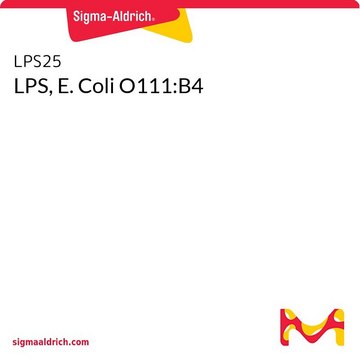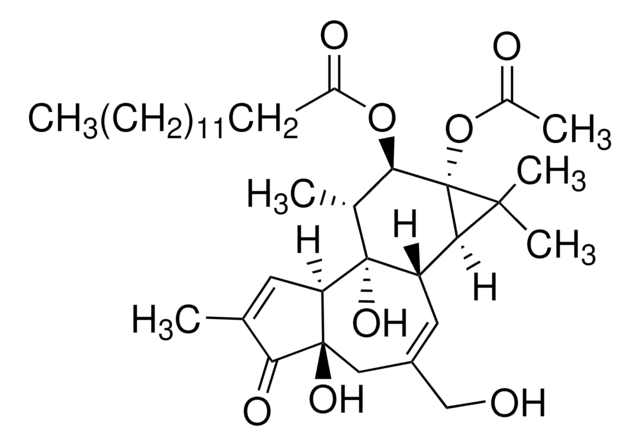528906
Polyinosinic Acid • Polycytidylic Acid, Sodium Salt, Double-Stranded
Known to induce interferon production. Hypochromicity: ≥40% at 248 nm. Extinction coefficient = 5000 M-1cm-1 at 260 nm, pH 7.0.
Synonym(s):
Polyinosinic Acid • Polycytidylic Acid, Sodium Salt, Double-Stranded, Poly I • poly C, Na
About This Item
Recommended Products
Quality Level
description
RTECS - TR0175000
Assay
≥99% (TLC)
form
powder
manufacturer/tradename
Calbiochem®
storage condition
OK to freeze
color
white
solubility
aqueous buffer: 10 mg/mL
water: soluble
shipped in
ambient
storage temp.
−20°C
SMILES string
[Na].[P](=O)(OC[C@H]3O[C@H]([C@@H]([C@@H]3O)O)[n]4c5ncnc(c5nc4)O)(O)O.[P](=O)(OC[C@H]1O[C@H]([C@@H]([C@@H]1O)O)N2C=CC(=NC2=O)N)(O)O
InChI
1S/C10H13N4O8P.C9H14N3O8P.Na/c15-6-4(1-21-23(18,19)20)22-10(7(6)16)14-3-13-5-8(14)11-2-12-9(5)17;10-5-1-2-12(9(15)11-5)8-7(14)6(13)4(20-8)3-19-21(16,17)18;/h2-4,6-7,10,15-16H,1H2,(H,11,12,17)(H2,18,19,20);1-2,4,6-8,13-14H,3H2,(H2,10,11,15)(H2,16,17,18);/t
InChI key
GETQKWBYQAUFQM-VRQAYDGLSA-N
General description
Application
- Penaeus monodon Interferon Regulatory Factor (PmIRF) Activates IFNs and Antimicrobial Peptide Expression via a STING-Dependent DNA Sensing Pathway.: This study explores the role of PmIRF in shrimp immune responses, specifically how it activates interferons and antimicrobial peptides through the STING-dependent DNA sensing pathway, enhancing antiviral defenses. (Soponpong et al., 2021).
- Identification, expression profiling of a grass carp TLR8 and its inhibition leading to the resistance to reovirus in CIK cells.: This article focuses on the TLR8 receptor in grass carp, its expression profiles, and how its inhibition confers resistance to reovirus in fish cell lines, providing insights into antiviral immunity in aquatic species. (Chen et al., 2013).
- Identification and expression profiles of ADAR1 gene, responsible for RNA editing, in responses to dsRNA and GCRV challenge in grass carp (Ctenopharyngodon idella).: The study examines the ADAR1 gene involved in RNA editing in grass carp, highlighting its response to double-stranded RNA and grass carp reovirus, shedding light on fish immune mechanisms. (Yang et al., 2012).
- Immune activation and target organ damage are consequences of hydrodynamic treatment but not delivery of naked siRNAs in mice.: This research differentiates the effects of hydrodynamic treatment and naked siRNA delivery in mice, showing that immune activation and organ damage are associated with the treatment method rather than the siRNAs themselves. (Rácz et al., 2011).
Warning
Reconstitution
Legal Information
Storage Class Code
11 - Combustible Solids
WGK
WGK 3
Flash Point(F)
Not applicable
Flash Point(C)
Not applicable
Certificates of Analysis (COA)
Search for Certificates of Analysis (COA) by entering the products Lot/Batch Number. Lot and Batch Numbers can be found on a product’s label following the words ‘Lot’ or ‘Batch’.
Already Own This Product?
Find documentation for the products that you have recently purchased in the Document Library.
Our team of scientists has experience in all areas of research including Life Science, Material Science, Chemical Synthesis, Chromatography, Analytical and many others.
Contact Technical Service